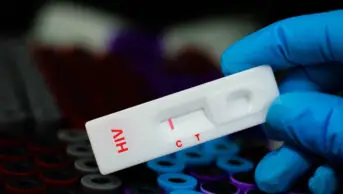The thermal grill illusion is a sensory ‘trick’ first demonstrated by a Swedish physician, Torsten Thunberg, in 1896. He used an interlaced grill of warm (40ºC) and cool (20ºC) bars to show that, while a person touching only a cool bar experiences coolness and touching a warm bar feels warmth, pressing a hand against the grill causes them to experience excruciating burning heat. The hand is not damaged and its actual temperature remains unchanged because the cold and warm bars cancel out each other thermodynamically. Thunberg claimed that the illusion occurred when certain ‘wrong’ signals override ‘right’ ones to reach the brain first.
The illusion and variations of it have become an established technique in pain research as pain can be applied without involving actual tissue damage. In one study the index and ring fingers on both the subject’s hands were placed in warm water and the middle fingers in cold water. This generated a paradoxical feeling that the middle fingers were painfully hot. Then the three fingers of one hand were touched to the same fingers on the other hand whereupon the painful heat experienced by the middle finger dropped by 64%. Partial self-touch in which only one or two fingers were pressed against each other didn’t work and neither did pressing the affected hand against an experimenter’s hand that had also been warmed and cooled in the same way. This suggests that the reason why, for example, people naturally clutch their hand after receiving an injury is that the relief offered by self-touch comes from a change in the brain’s representation of the rest of the body.
More recent research published in Current Biology suggested that how you feel pain is affected by where sources of pain are in relation to each other so that, for example, simply crossing your fingers can change what you feel on a single finger. Again the researchers applied warmth to the subject’s index and ring fingers and a cold stimulus to the middle finger of one hand. This time the researchers showed that the interaction between nerve pathways was based on the spacial arrangement of the fingers. If the middle finger was crossed over the index finger, the paradoxical sensation of burning heat on the middle finger was reduced. However, if the index finger was cooled and the middle and ring fingers were warmed, the burning heat sensation was now increased when the middle finger was crossed over the index finger.
Changing the spacial pattern of interacting stimuli in this way may help to explain the great variability of pain perception. It also raises the interesting possibility that pain levels could be manipulated by simply moving one part of the body relative to another.

